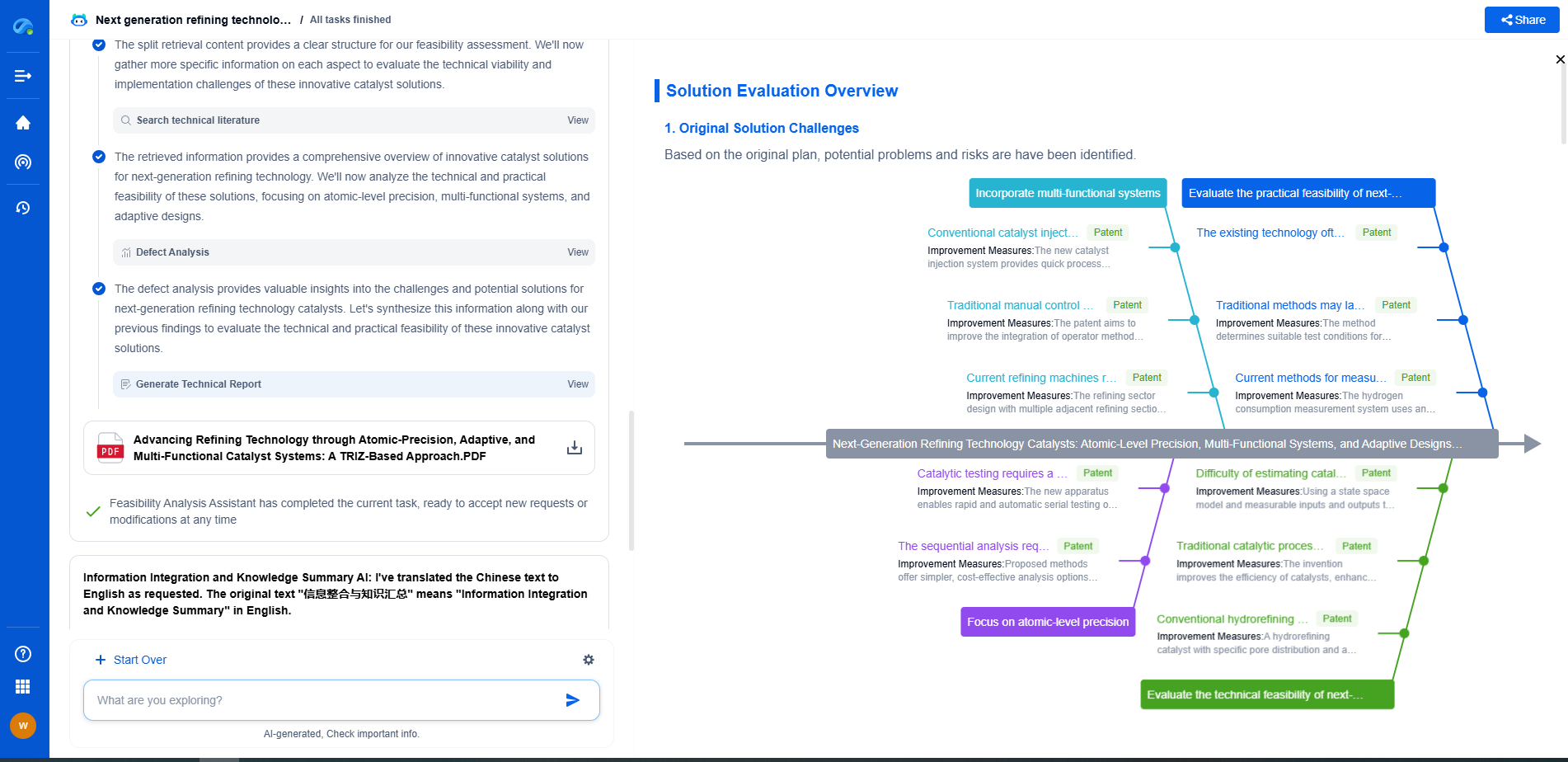How modular robot arms are changing manipulator design
JUN 26, 2025 |
Modular robot arms have become a groundbreaking innovation in the field of robotic manipulators. Unlike traditional robot arms, which are often rigid and designed for specific tasks, modular robot arms are characterized by their flexibility and customizability. This adaptability makes them highly suitable for a wide range of applications, from industrial automation to healthcare.
One of the most compelling features of modular robot arms is their ability to be easily reconfigured. This modularity allows for different modules or segments of the arm to be swapped out or rearranged. As a result, these arms can be quickly adapted for new tasks or environments, reducing downtime and increasing productivity.
Advantages of Modular Design
The modular design of robot arms offers several distinct advantages over traditional, monolithic designs. Firstly, they provide a cost-effective solution for manufacturers. Instead of investing in a new robotic system for each new task, companies can simply modify their existing modular arms. This not only saves money but also reduces the time needed to integrate new robotic solutions.
Secondly, modular robot arms enhance ease of maintenance and repair. If a part of the arm fails or requires an upgrade, it can be replaced or modified without the need to dismantle or replace the entire system. This feature significantly extends the lifespan of the robotic system and contributes to sustainability by reducing waste.
Moreover, modularity fosters innovation. Engineers and developers can experiment with new configurations and functionalities by mixing and matching different modules. This flexibility encourages creative solutions and can lead to the development of more efficient and effective robotic systems.
Impact on Industry
The impact of modular robot arms is particularly evident in the manufacturing industry. These arms are capable of performing a wide array of tasks such as welding, painting, assembly, and material handling. Their ability to be reconfigured means that manufacturers can quickly adapt to changing production needs and market demands without significant delays.
In addition to manufacturing, the healthcare sector is also experiencing significant benefits from modular robotic arms. They are being used in surgical procedures, rehabilitation, and patient care. The precision and adaptability of these robots enable them to perform delicate tasks that require a high degree of accuracy and repeatability.
Looking Forward: Challenges and Opportunities
Despite their advantages, modular robot arms are not without challenges. Ensuring seamless integration and communication between different modules can be complex. Compatibility between modules from different manufacturers remains a significant hurdle, necessitating standardization efforts within the industry.
However, these challenges present opportunities for growth and innovation. As the technology advances, we can expect to see improvements in the interoperability of modules, more sophisticated control algorithms, and enhanced sensory capabilities. These developments will further solidify the role of modular robot arms as a central component of modern manipulator design.
Conclusion
Modular robot arms are revolutionizing the way we approach manipulator design. Their flexibility, cost-effectiveness, and ability to encourage innovation make them an attractive option for various industries. As technology continues to evolve, modular robot arms will undoubtedly play a crucial role in shaping the future of automation and robotics. Their impact will be felt across numerous sectors, driving efficiency and adaptability in an ever-changing world.
Ready to Redefine Your Robotics R&D Workflow?
Whether you're designing next-generation robotic arms, optimizing manipulator kinematics, or mining patent data for innovation insights, Patsnap Eureka, our cutting-edge AI assistant, is built for R&D and IP professionals in high-tech industries, is built to accelerate every step of your journey.
No more getting buried in thousands of documents or wasting time on repetitive technical analysis. Our AI Agent helps R&D and IP teams in high-tech enterprises save hundreds of hours, reduce risk of oversight, and move from concept to prototype faster than ever before.
👉 Experience how AI can revolutionize your robotics innovation cycle. Explore Patsnap Eureka today and see the difference.
- R&D
- Intellectual Property
- Life Sciences
- Materials
- Tech Scout
- Unparalleled Data Quality
- Higher Quality Content
- 60% Fewer Hallucinations
Browse by: Latest US Patents, China's latest patents, Technical Efficacy Thesaurus, Application Domain, Technology Topic, Popular Technical Reports.
© 2025 PatSnap. All rights reserved.Legal|Privacy policy|Modern Slavery Act Transparency Statement|Sitemap|About US| Contact US: help@patsnap.com

